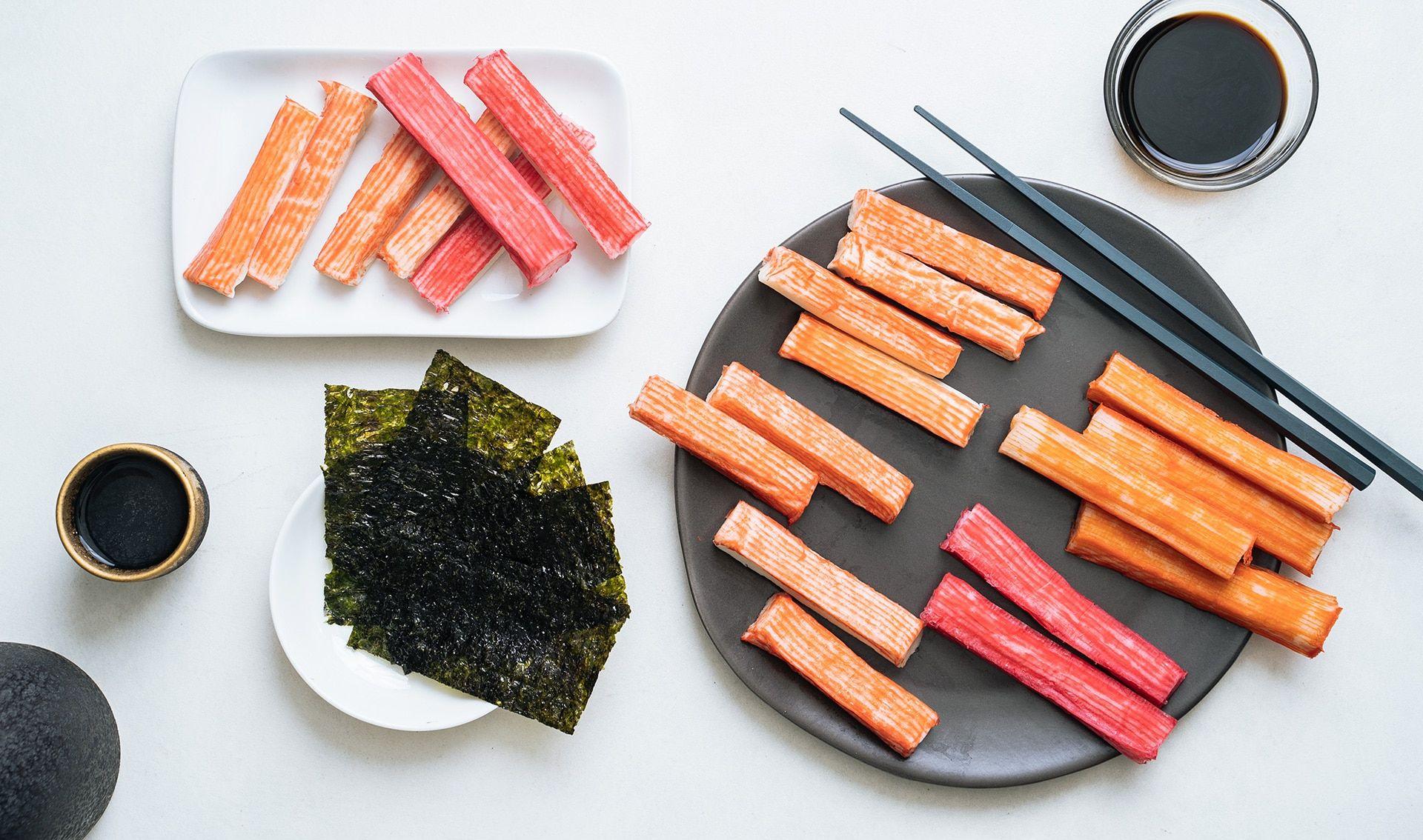Also known as kani kama or imitation crab meat, crabsticks are made not with crab, but with white fish (usually pollock) that’s ground into surimi, shaped into sticks, colored, and flavored to resemble the real thing.
Its cheaper pricetag, longer shelf life, and admittedly tasty flavor give crabsticks an appeal all of their own, proving indispensable for making Japanese-American dishes such as California maki, or Filipino spin-offs like (the so-called) “Japanese” siomai.
Not all crabsticks are equal, however. How do the different brands in the supermarket compare?
This article was written in 2019. Prices indicated below were at the time of publishing.
Hokkaido
Hokkaido’s crabsticks are of a medium length (roughly 2 ½”) and a pale orange hue. It separates easily into distinct strands that are just thick enough to hold a bite, making it great for kani salad.
Coming on the highly juicy (if not wet) side, it delivers a flavor that’s very sweet, but also full of savory umami. It tastes less specifically of crab and more generally of seafood, turned up 10 notches thanks to the sugar and the MSG. Still, it’s delicious for what it is. We can’t help but snack on it plain.
Asian Star Ichiban
Ichiban’s crabsticks are longer (around 2 ¾”) and tend to be frayed at the edges. Though firmer and a little more stuck together, the strands are individually thinner and easy to separate. There’s just enough moisture that it delivers a mild, natural-feeling juiciness without spurting out liquid.
The flavor is mostly of that general sweet seafood-y sort, but with what seems to be an onion-y sweetness to complement the seafood taste, and an odd but not out-of-place note we can best compare to jackfruit flavoring.
Kibun Sea Stix
Also on the tall and fat side, Kibun’s crabsticks are visibly much redder on the exterior and whiter within. It comes denser and stiffer, and thus harder to separate into strands. It’s also less juicy than the others. You still get the sweet-umami crabstick taste (with a slightly saltier finish). But the relative doughiness gets in the way of the flavor and makes for an overall weaker impact.
Sevensea
Sevensea is shorter (around 2 ⅓”) and stouter in form compared to the other brands. It separates very easily into strands, though they tend to come off in layers (which themselves separate into individual strands). And these are soft and silky on the tongue.
Sevensea is also on the highly juicy and wet side, so much that it spurts juice out when you squeeze the crabstick with your fingers. It tastes mostly similar to all other brands. But it’s a touch less salty yet has a seemingly longer, more complex umami finish.
Smartcrab
Like Kibun, Smartcrab is also of the bright-red exterior sort. But it’s a tad shorter, with more finely drawn vertical lines across its surface. And as with Kibun, it’s on the denser, doughier side that’s not very juicy. But it’s even dryer, with a rough feel on the tongue and with the tendency to break apart when you try to separate it into strands. There’s a floury taste to it as well. Nonetheless, it carries the sweet, seafood-y (notably more shrimpy) flavor profile of crabsticks.
Takeda
Takeda gives you medium-length crabsticks with a pale orange hue. It has a tight, rather dense feel to it as well which isn’t the easiest to separate into strands. But it delivers on the moist and juicy quality we love from the other brands. It’s relatively salty past delivering the general sweet seafood-y umami profile. And it ends with a peculiar richness we can best compare to egg yolks in flavor.
Tokai
From the size and the (general) color, Tokai appears to be very similar to Sevensea (if not one and the same thing, as we’d suspected initially). The texture is almost the same, with very easily separable strands that are soft and supple to chew on, and a wonderfully moist and juicy makeup. We’re not even sure if we’re just imagining things—but we only really noticed very slight differences in flavor. Tokai is just a touch less salty with a richer, egg yolk-y finish like Takeda’s.
Our Picks: Sevensea and Tokai
Given the similarities between Sevensea and Tokai, we think it futile to decide between the two.
Either way, their easily separable strands, soft and silky consistency, juicy makeup, and addictive umami burst make them a hit in our book—whether for eating straight up or throwing into different recipes.
Coming rather close to both brands is Hokkaido. Though a tad rougher on the tongue, it’s nonetheless easy to separate and carries the best balance between the decidedly exaggerated sweet, savory, and umami profiles.
